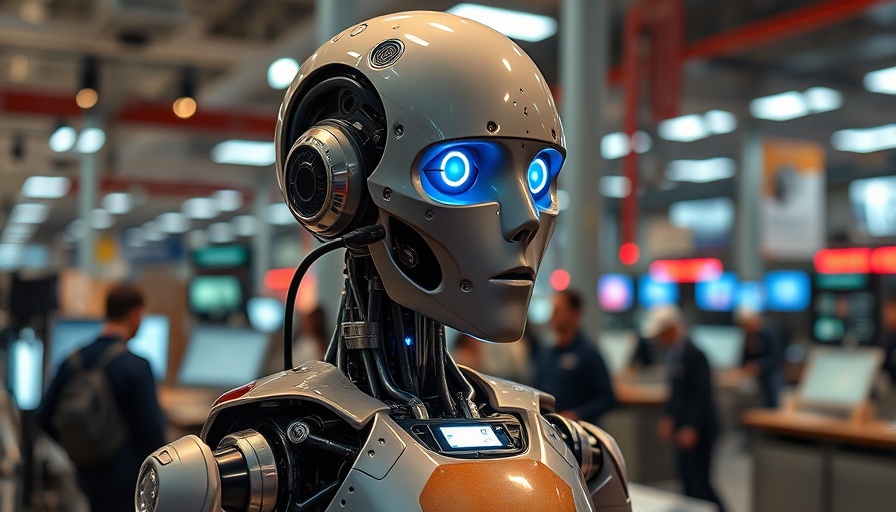
The Rising Fear of AI Job Loss
The surge of artificial intelligence (AI) is unleashing exciting possibilities while simultaneously casting a shadow of anxiety over the job market. A recent survey by the Pew Research Center reveals that a significant majority of Americans are concerned about AI’s impact on employment, particularly in specific job sectors. As more people become aware of the capabilities of AI, the worry grows about which jobs might disappear in the coming years.
What's at Risk? AI Job Cuts Highlighted by Public Opinion
The survey indicates alarming statistics: 73% of U.S. adults believe that cashiers face job cuts from AI within the next two decades. Similarly, majorities express concern for journalists (59%), factory workers (67%), and even software engineers (48%). This echoes a broader concern regarding AI job loss and layoffs, suggesting a looming threat that many perceive as inevitable. Interestingly, there appears to be a discrepancy in perceptions between the general public and AI experts. For instance, 62% of AI specialists predict job losses for truck drivers, while only 33% of the public shares that sentiment.
Understanding the Shift: Old vs. New Automation
Experts like Molly Kinder emphasize the need for a cultural shift in how we perceive AI in the workforce, noting that current anxieties blend old automation concerns with the revolutionary potential of generative AI. Unlike the traditional machines that largely affected blue-collar jobs, generative AI is poised to impact white-collar positions significantly. It can summarize complex documents, analyze extensive datasets, and hold conversations, raising questions about job relevancy.
The Jobs Most Affected by Generative AI
Research conducted by Kinder and her colleagues highlights roles that are particularly susceptible to the advent of generative AI. Positions in office administration, sales, legal professions, and mathematics are all flagged for vulnerability. For instance, common jobs like office clerks, travel agents, paralegals, and tax preparers may find themselves in jeopardy as AI tools become more integrated into everyday business operations.
Is AI a Help or a Hindrance in the Workplace?
Mark Muro, also from Brookings, cautions that while these jobs face higher exposure to AI, it remains uncertain whether AI will replace or support workers. He stresses the importance of recognizing that these white-collar jobs are integral to the American middle class and that proactive measures need to be taken to mitigate job loss.
The Future: Navigating the AI Landscape
While the benefits of AI seem vast, predicting its true impact on the job landscape is a complex endeavor. MIT’s Eric So delves into the rapidly evolving capabilities of AI, which has progressed from simple chatbots to sophisticated systems that can even perform tasks autonomously. This evolution suggests that the potential for AI’s role in the workforce is not merely a concern for today, but a pressing issue for the future.
How Communities Can Adapt to Changes
For communities, understanding these changes is crucial. As the possibility of AI-related job loss looms, individuals and local businesses must consider how to adapt. Embracing lifelong learning and reskilling initiatives can empower workers to transition into roles that AI cannot easily replace, reducing the potential impact of AI job cuts.
Engaging with the Community: Navigating Change Together
Local initiatives can pave the way for adaptable strategies. Communities can begin discussions on the integration of AI into various industries, ensure resources are available for reskilling, and foster a supportive environment for those transitioning roles. Recognizing concerns about AI is the first step, but dedicating resources to educate and prepare the workforce is imperative.
As we face the uncertain onslaught of AI job transformation, it’s crucial to engage openly. Together, communities can brainstorm solutions to address the fears of AI job loss and lay a foundation for a future where AI complements rather than replaces human labor.
 Add Row
Add Row  Add
Add 




Write A Comment